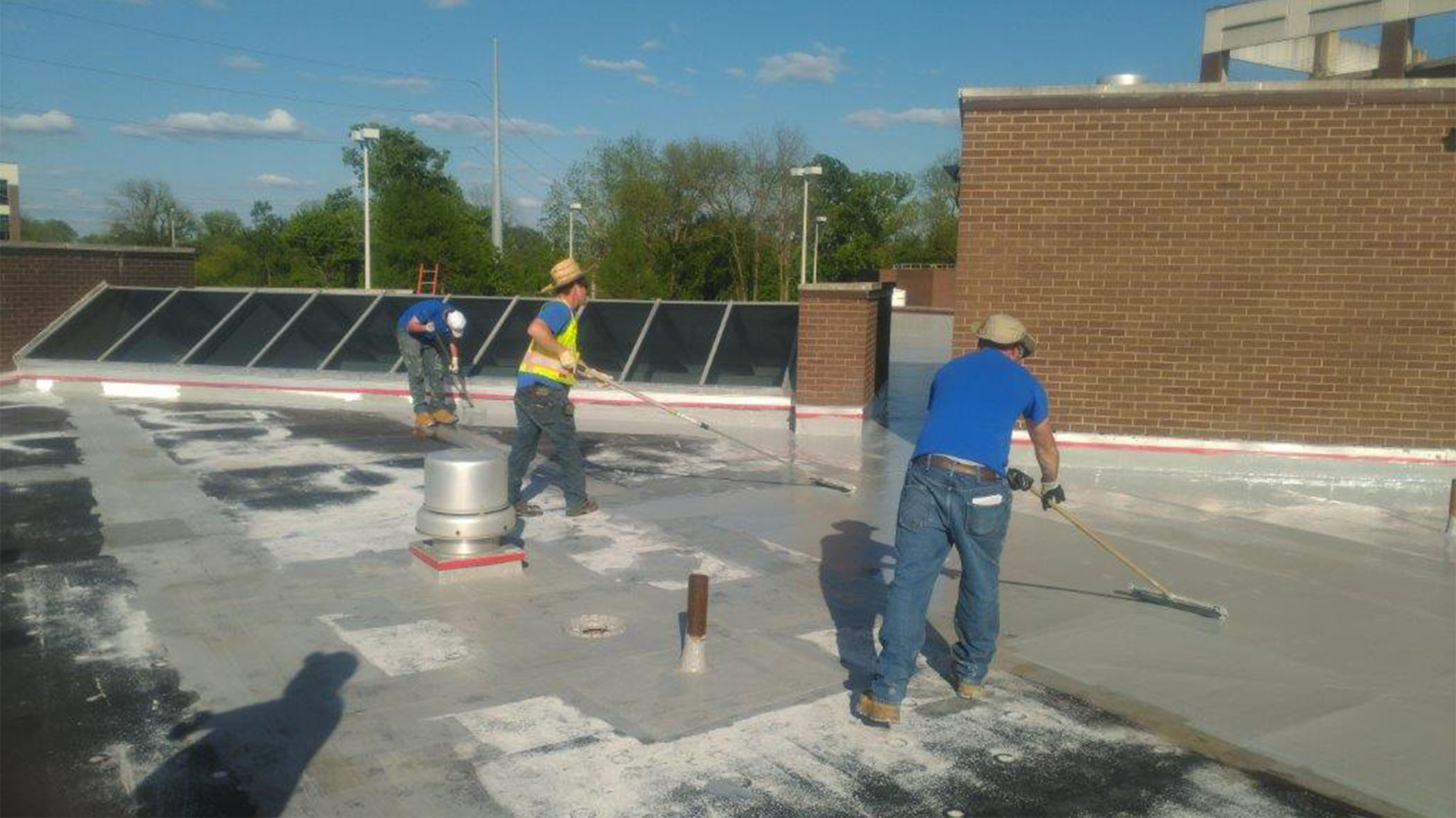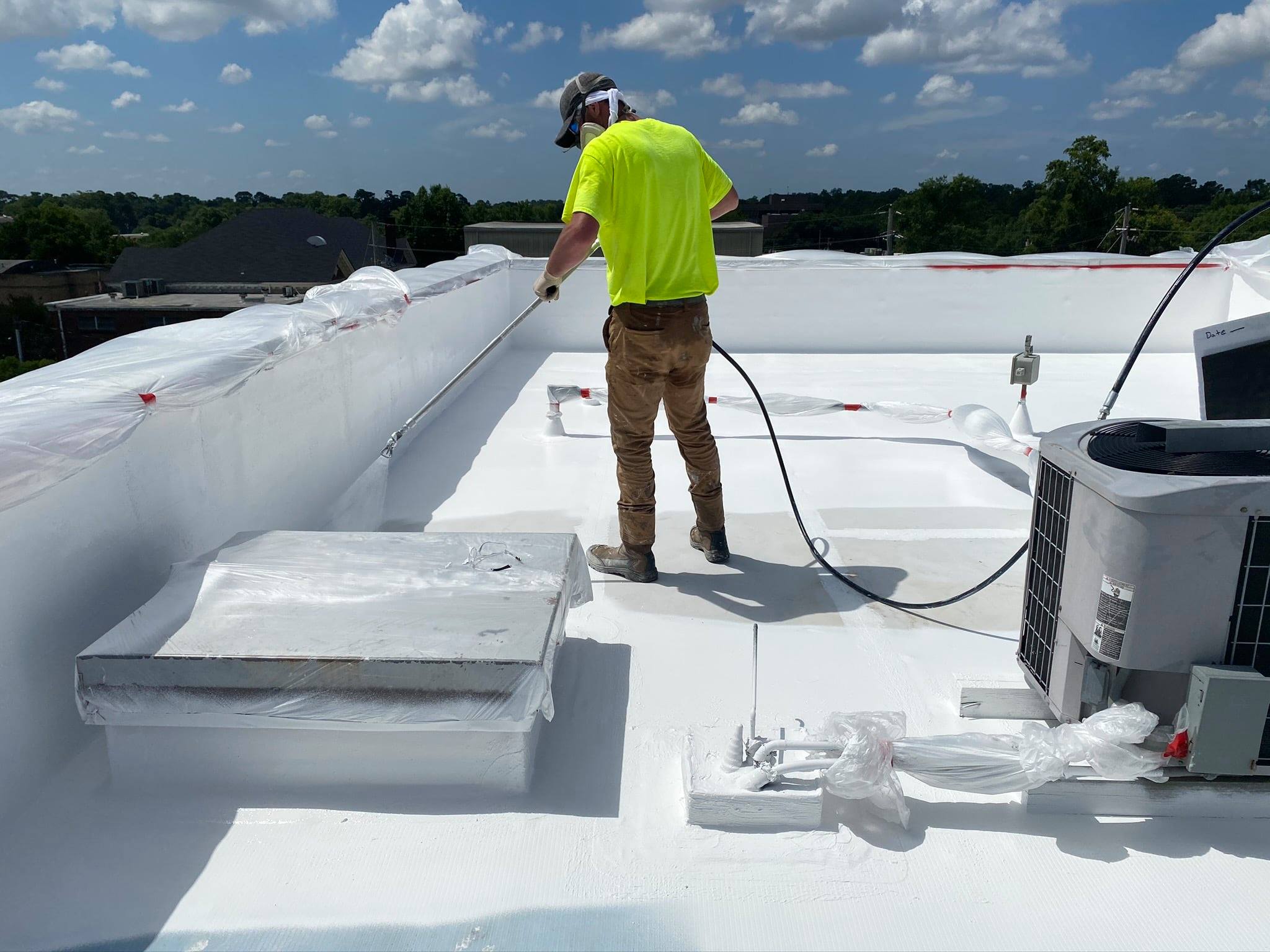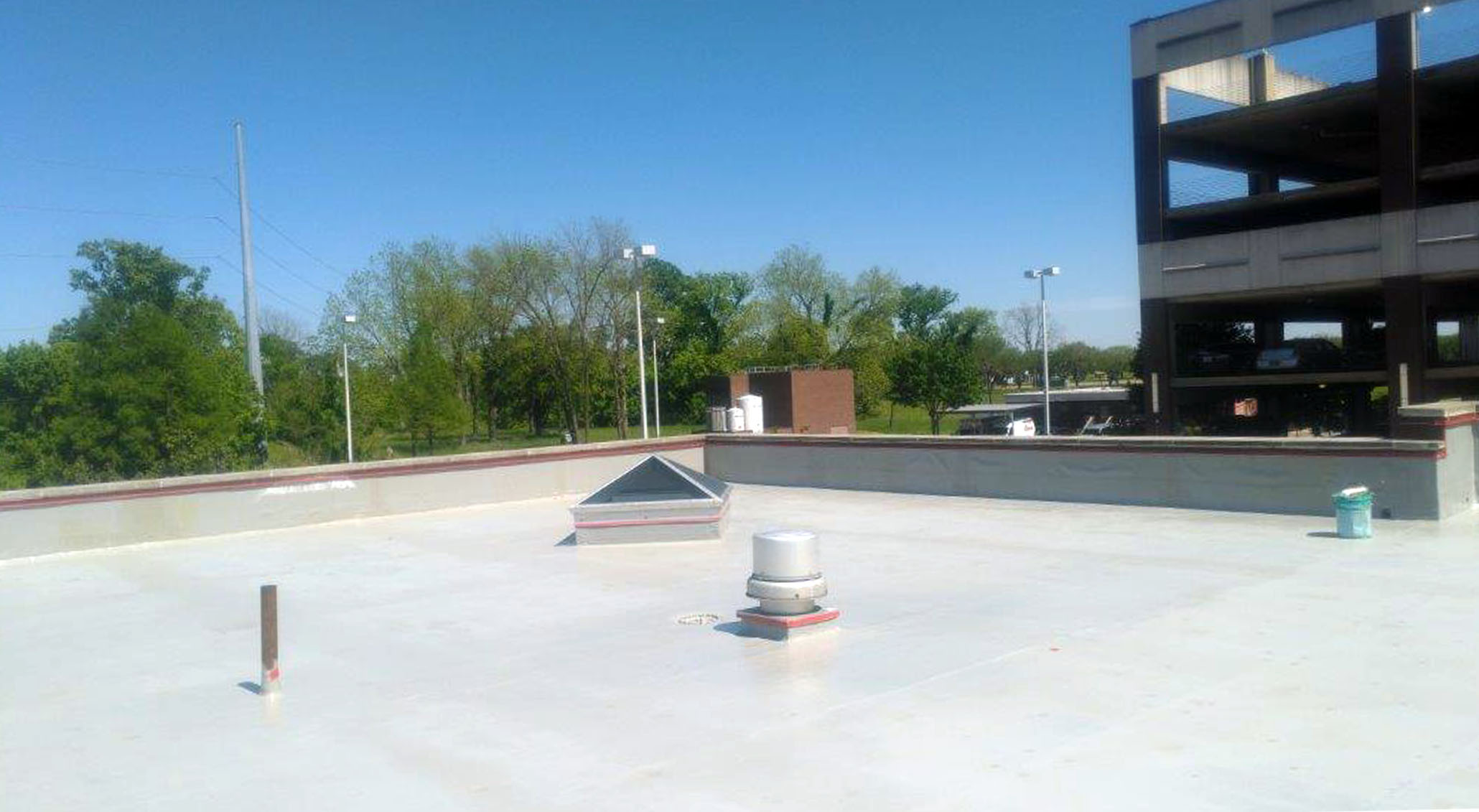Benefits of Fluid Applied Roofing vs. Conventional Roofing for Commercial Properties
When it comes to protecting commercial properties, choosing the right roofing system is crucial. Fluid applied roofing has emerged as a popular alternative to conventional roofing systems. In this blog post, we’ll explore the key benefits of fluid applied roofing and how it stacks up against traditional options.
What is Fluid Applied Roofing?
Fluid applied roofing involves the application of liquid coatings that cure to form a seamless, waterproof membrane. This method is typically used for flat or low-slope roofs and offers various advantages over conventional roofing systems.
1. Seamless Protection
One of the most significant benefits of fluid applied roofing is its seamless application. Unlike traditional roofing systems that rely on seams or joints, fluid applied roofing eliminates vulnerabilities by creating a continuous membrane. This reduces the risk of leaks and water infiltration, ensuring superior protection for the building.
Fluid applied roofing systems are designed to withstand harsh weather conditions, UV exposure, and physical wear. The durable surface resists cracking and peeling, often extending the roof's lifespan significantly compared to conventional roofing materials, which may require more frequent repairs or replacements.
3. Flexibility and Adaptability
Fluid applied roofing can easily accommodate building movements and structural changes. Its flexibility allows it to expand and contract with temperature fluctuations without compromising integrity, making it ideal for commercial properties subject to such dynamics.
4. Easy Installation and Minimal Disruption
The application of fluid roofing can often be completed more quickly than traditional roofing systems. This results in less downtime for businesses and minimizes disruption to daily operations. Additionally, fluid applied roofing can often be applied over existing roofing materials, reducing waste and installation time.
5. Energy Efficiency
Many fluid applied roofing systems are designed with reflective coatings that help reduce heat absorption. This can lead to lower energy costs by improving the building's energy efficiency, especially in hot climates. Energy-efficient roofing can also contribute to LEED certification and sustainability initiatives.
6. Low Maintenance Requirements
Once applied, fluid roofing systems typically require less maintenance than conventional roofing options. Their durability and seamless nature mean fewer repairs and upkeep, allowing property owners to save on long-term maintenance costs.
7. Enhanced Aesthetic Appeal
Fluid applied roofing offers a variety of colors and finishes, allowing commercial property owners to customize the appearance of their roofs. This aesthetic flexibility can enhance the overall look of the building while providing robust protection.
8. Environmental Benefits
Fluid applied roofing is often composed of environmentally friendly materials and can be applied over existing roofs, reducing waste. Many systems are also recyclable at the end of their lifespan, making them a sustainable option for eco-conscious businesses.
Although the initial investment may vary, fluid applied roofing can be more cost-effective in the long run due to its durability, low maintenance needs, and energy efficiency. The extended lifespan can lead to significant savings over time, making it a wise financial choice for commercial properties.
Comparing Fluid Applied Roofing to Conventional Roofing
| Aspect | Fluid Applied Roofing | Conventional Roofing |
|--------------------------------------|--------------------------------------------|---------------------------------------------|
| Seamless Application | Yes | Often has seams/joints |
| Durability | High resistance to wear | Varies by material |
| Flexibility | Highly flexible | Limited flexibility |
| Installation Speed | Quick and efficient | May require longer installation |
| Maintenance | Low maintenance | Often requires more upkeep |
| Energy Efficiency | Can be reflective | Varies; often less efficient |
| Environmental Impact | Eco-friendly options available | Varies by material and disposal |
| Cost-Effectiveness | Long-term savings | May incur higher long-term costs |
Conclusion
For commercial properties looking for a reliable roofing solution, fluid applied roofing offers numerous advantages over conventional roofing systems. From seamless protection and durability to energy efficiency and low maintenance requirements, fluid applied roofing stands out as a smart investment for property owners.
If you're considering a roofing upgrade or replacement, evaluating fluid applied roofing might be the key to ensuring lasting protection and value for your commercial property.



.jpg)
.jpg)

.jpg)
.jpg)
.jpg)
.jpg)




